New Jersey Future Blog
NJ’s Gold Coast Ranks First in “Smart Transportation”
February 25th, 2011 by Jay Corbalis
Fresh on the heels of Streetsfilms’ video lauding Jersey City as a leader in transit-oriented development, New Jersey’s second city is again making headlines as a leader in smart growth. In its ranking of America’s Smartest Transportation Regions, the Natural Resources Defense Council’s Smarter Cities project ranked the Jersey City “region” (more on that below) No. 1 in the medium- sized cities category (population 1m-250,000).
The NRDC’s analysis looked at three main categories — transit access, transit use and transportation affordability — to determine the rankings. (An explanation of NRDC’s methodology can be found here.) Across these categories, the Jersey City region did quite well. Along with New York City, it was one of only two regions in the country to have a vehicle ownership rate of less than one per household. It also had the lowest average household rate of vehicle miles traveled (VMT) and the highest percent of households (98 percent) with access to transit.
Certainly, the Jersey City region is blessed with a wide range of transit options –commuter rail, subway, light-rail, buses and ferries — that few cities in America can match. But, as the NRDC points out, the region’s success as a transit Mecca is also the result of deliberate policies to combat auto-dependency:
“Jersey City is fast becoming a model of leadership, as Mayor Healy has set the tone and city policy that auto dependency is antigrowth,” says Jennifer Morrill, a spokeswoman for Jersey City. “The city’s growth and development would clog the streets with traffic if it were not based on low auto utilization and high mass-transit use.”
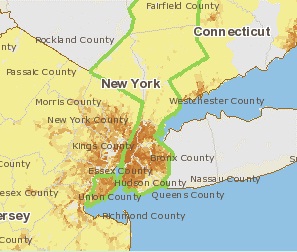 To be fair, a big reason the Jersey City region does so well in this analysis is the way the region was defined by the NRDC: roughly from Bayonne in the south to West New York in the north and Secaucus in the west, arguably the most densely populated area in the country. By contrast, the New York region (pictured) extends well into the Hudson Valley and Connecticut, while the Philadelphia region includes predominantly rural areas in South Jersey.
To be fair, a big reason the Jersey City region does so well in this analysis is the way the region was defined by the NRDC: roughly from Bayonne in the south to West New York in the north and Secaucus in the west, arguably the most densely populated area in the country. By contrast, the New York region (pictured) extends well into the Hudson Valley and Connecticut, while the Philadelphia region includes predominantly rural areas in South Jersey.
Still, the study, and Jersey City’s rank, is a reminder of what can be accomplished when smart growth planning is combined with robust, reliable transit options.
Related Posts
Tags: Land use, NJ Transit, Smart Growth, TOD, Transit, Transportation, Zoning

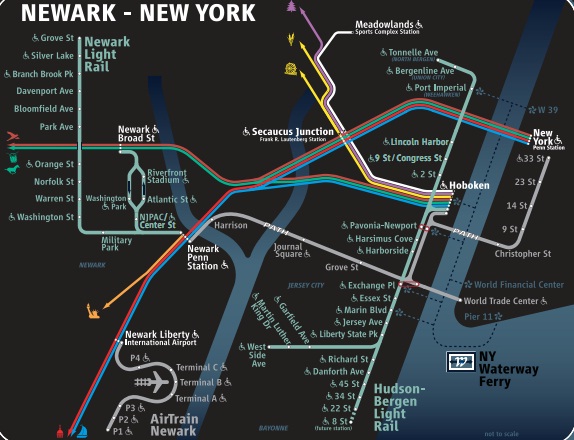
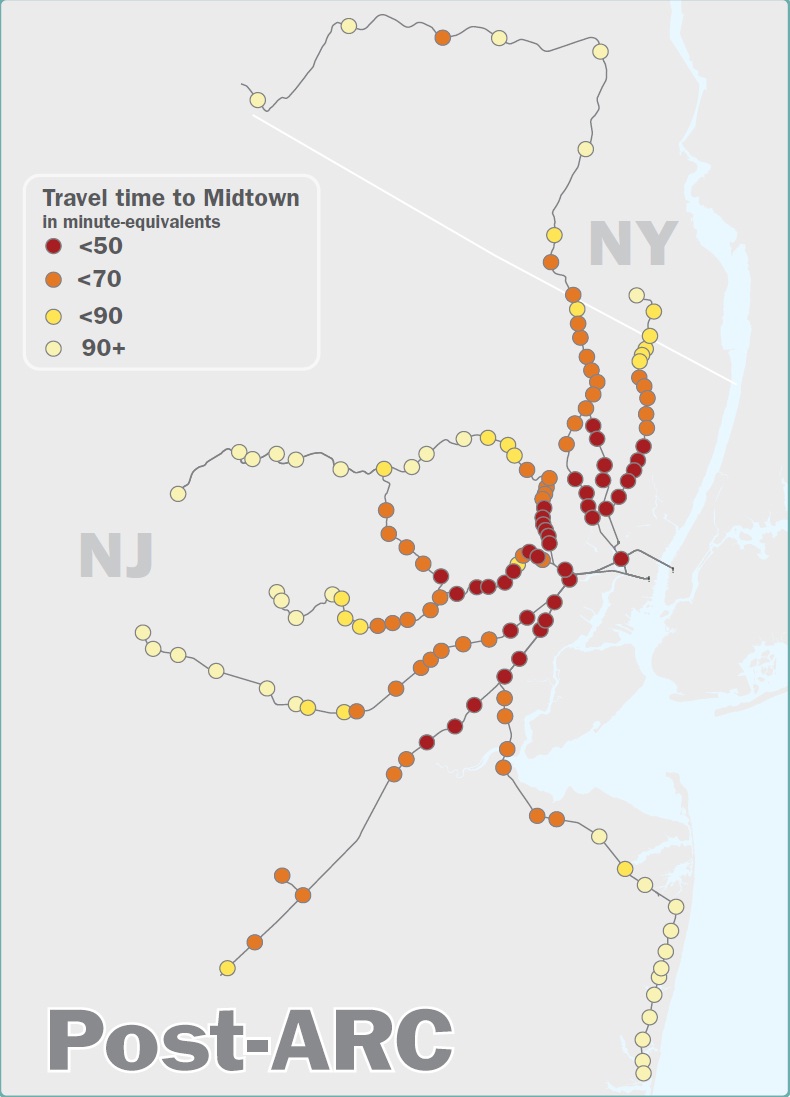

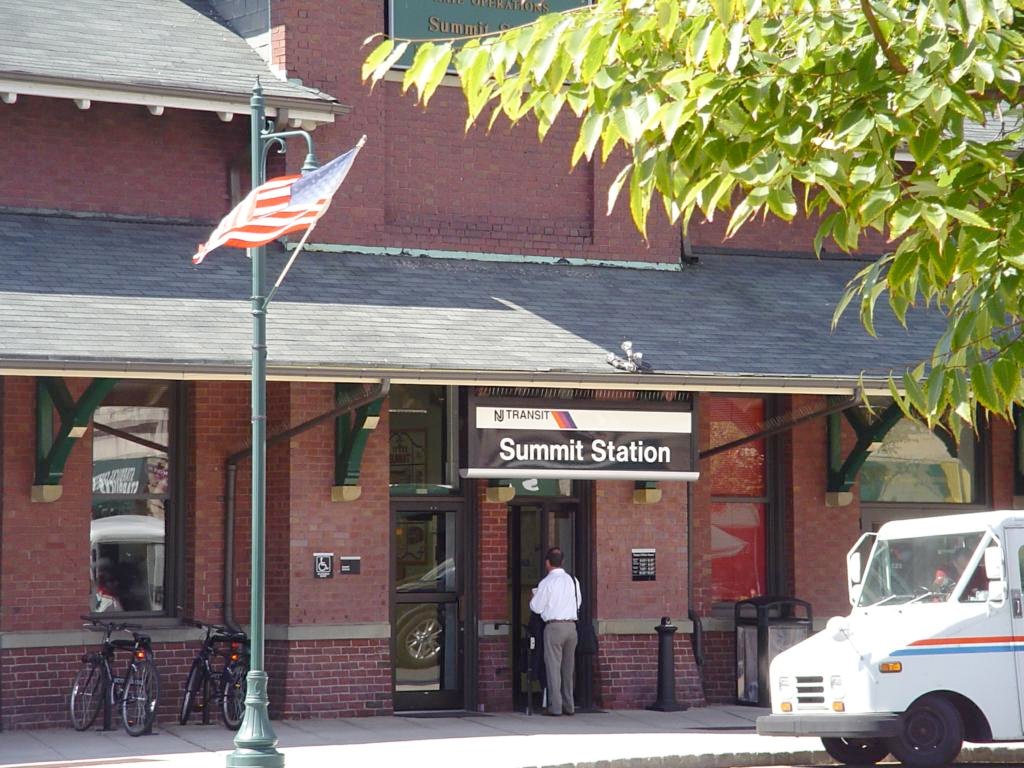

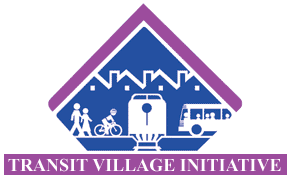











This Streetfilms video tells a lot of the story: http://www.streetfilms.org/transit-oriented-development-2/
Indeed, Hudson County is the most densely populated county in the US that’s not coextensive with, or part of, a single city. The only counties denser are San Francisco County in CA and four of the five boroughs of NYC (New York [Manhattan], Kings [Brooklyn], Bronx, and Queens counties).
Judging by the Columbus ave project and new traffic signaling that is designed 100% for cars at the expense of the heavy pedestrian traffic in the area I would say that the city has not really gotten the message that, ‘..auto dependency is antigrowth’.
I agree on the Columbus Ave point. I fear for my life whenever I cross Marin Blvd along Columbus.
The Light Rail in JC is great. The NJ Transit police do a good job trying to keep it safe (police immediately arrested two passengers who got into a fist fight on my train this week). However, the honor system for ticketing leaves tax payers over-burdened with the Light Rail cost. I see many riders sharing used tickets and less than once a month do I see NJ Transit police fining passengers without tickets. Many local residents are free-riding (literally).